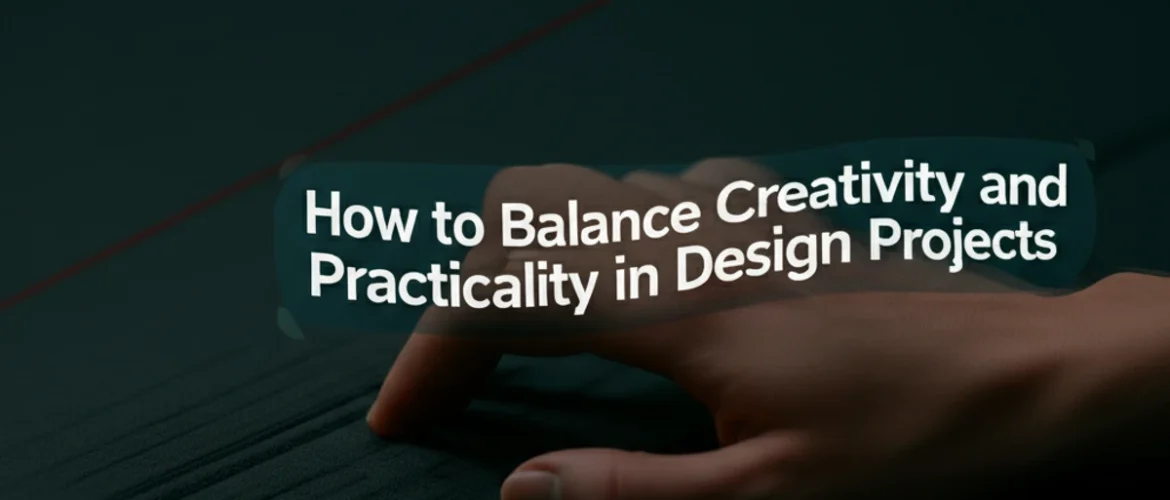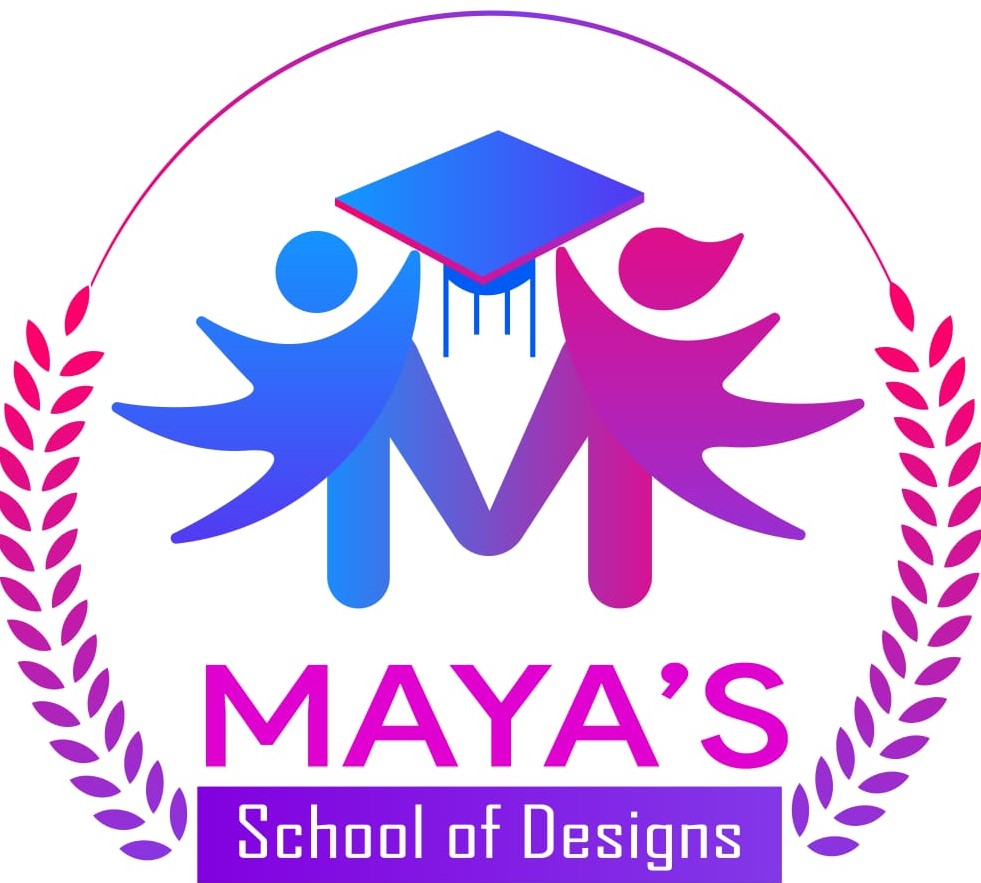Blog
How to Balance Creativity and Practicality in Design Projects
- September 20, 2025
- Posted by: admin
- Category: ** Design

Design Projects As designers we often find ourselves caught in a timeless tug-of-war don’t we ? On one side there’s the wild untamed spirit of creativity – the “what if we tried this?” whispers that fuel our most audacious ideas. On the other ,the grounding hand of practicality – the “can we actually build this? ” realities of budget , timeline and user needs .This isn’t just a challenge; it’s the crucible where true design magic happens.
For years,I navigated this very sometimes tightrope stumbling , sometimes soaring. I’ve seen brilliant concepts die on the vine due to a lack of practicality , and perfectly functional designs fall flat without a spark of imagination. It’s a delicate dance this quest for the perfect design balance , but it’s one we must master to create truly impactful work.Whether you’re a design student eager to unleash your vision or seasoned a professional striving for project excellence understanding how to marry your creative instincts with real-world constraints is paramount. This isn’t about choosing sides; it’about s making them partners .
Is Your Inner Maverick Clashing with Reality?
You know the feeling . That initial burst of when inspiration an idea descends upon you like a brilliant colorful comet. mind Your races , sketching,connecting dots envisioning possibilities unbounded by gravity or physics . This is your inner maverick, the pure unadulterated creative force that drives you. It’s exhilarating liberating, and absolutely essential to kickstarting any design project . You see the perfect shade of emerald green the revolutionary user flow the sculptural form that redefines an object.The world is your oyster, and you’re ready to paint it .
But then, the quiet persistent voice of reality chimes in. “What’the s budget for that custom-fabricated emerald green?” “Does the user actually need that revolutionary flow , or will it confuse them? ” “we Can produce that sculptural form at scale?” Suddenly your comet feels like it’s plummeting towards Earth , threatening to shatter. This isn’t a sign to abandon your vision; it’s a signal to begin the alchemical process of transformation. It’s a recognition that pure inspiration while vital is just the first ingredient in a complex and delicious recipe.
Where Do the Dreams the Meet Deadlines?
This is where many designers falter: assuming practicality is an afterthought,a grim reaper that swoops in at the eleventh hour to hack away at your masterpiece . In truth integrating practical considerations early isn’t a creativity killer; it’s a compass .Imagine setting sail on the open ocean without a map or a destination.Thrilling perhaps but rarely in successful reaching a desired port . Your design brief your user research your technical specifications – these are your navigational tools.
Think of practicality as the sturdy anchor for your magnificent idea-filled hot air balloon. doesn It’t ground the balloon permanently; it ensures it doesn’t drift aimlessly into the stratosphere never to return. By understanding the project’s limitations – budget,timeline technology,audience target needs – from the outset you empower your creativity to solve real problems within real parameters . These early constraints become the framework the structure within which your most innovative solutions can blossom,not flounder. This proactive approach is one of the most vital design project tips can I offer: embrace the boundaries, don’t fight them.
Can Constraints Actually Spark More Creativity ?
This might sound counterintuitive but I’ve found that constraints are often creativity’s best friend . When you’re faced with an unlimited canvas the sheer vastness can be paralyzing .But give a designer a puzzle with specific pieces and watch their ingenuity ignite.Remember the famous story of Apollo 13 ? When an explosion crippled their spacecraft ,NASA engineers didn’t have unlimited resources; they had a small, specific set of tools and a looming deadline. Their radical, on-the-spot solutions weren’t despite the constraints but because of them .
In your consider embracing “creative boundaries. ” For example what if you were challenged to design a sustainable product using only recycled materials,or a user interface that could be operated with just two colors? types These of limitations force you to think differently, to explore unexpected avenues and to push beyond conventional solutions . It’s about leveraging the practical “no” to uncover a thousand innovative “yeses.” This shift in perspective transforms the battle of creativity vs practicality into a powerful force collaborative.
How Do You Navigate the Feedback Labyrinth ?
Ah client feedback – the legendary gauntlet every designer must face. It’s often battleground the where your creative vision and practical realities clash most intensely.You’ve poured soul your into a design only for a stakeholder to request a change that feels.. . well,uninspired. Or worse utterly impractical . Here ,your ability to communicate and negotiate becomes as important as your design skills. Not all feedback is created equal.
One of the most crucial design project tips is to differentiate between subjective preferences (“I don’t like blue”) and objective user- or business-driven needs (“Our user testing shows users struggle with blue text on background this”).Your role isn’t just to execute; it’s to guide. Present your design choices with conviction explaining the ‘why’ behind your creative decisions and how they address practical the objectives. If a client insists on an impractical feature articulate the potential trade-offs in terms of budget timeline user experience or technical feasibility .Sometimes, a simple clear explanation – perhaps even a quick mock-up of the “impractical” version – can illuminate the path back to optimal the design balance.I once had a client demand a feature that would have doubled development the time for minimal user benefit; by clearly mapping out the resource implications we found a more elegant , simpler solution that still met their core need.
Is Iteration Your Secret Weapon for Design Balance?
The journey from initial concept to final product is rarely a straight line. It’s a winding path of exploration, refinement,and testing. This iterative process is your secret weapon in finding that elusive design balance. It’s where creativity and practicality continually inform and elevate each other. You start with a bold idea (creativity), then test its feasibility (practicality) learn from the results,and refine your approach.This isn’t failure; it’s progress.
Think of it like a sculptor: they start with a rough block (big idea),then chip away, refine, add ,and subtract ,constantly stepping back to assess the form texture, and how it interacts with its environment. Each iteration brings the design closer to a harmonious blend of vision and viability . Prototyping A/B testing user feedback loops – these are all practical tools that allow you to continuously infuse your creative ideas with real-world data ensuring your final output is not only beautiful and innovative but also feasible functional, user and-centric. Embrace the messy middle; it’s where your best work truly takes shape .
The Symphony of Vision and Viability
Ultimately the perceived conflict between creativity vs practicality is a false dichotomy. They are not opposing forces meant to destroy each other but complementary essential partners for crafting truly remarkable designs.Your wild ideas need the grounding reality of to become tangible and practical solutions need the spark of creativity to transcend mere and functionality become genuinely impactful.
The most successful designers I know and the projects that truly stand out ,are those that master this intricate dance . They understand that design balance isn’t about compromise but about integration . It’s about letting the constraints of the real world inspire new forms of creativity ,and letting your creative vision elevate the mundane into the magnificent. So,next time you’re faced with that familiar tug-of-war remember: you’re not choosing sides . You’re orchestrating a symphony where vision and viability play in perfect harmony . What’s your biggest challenge in finding this balance in your own projects? I’d love hear to thoughts your in the comments below!
—
